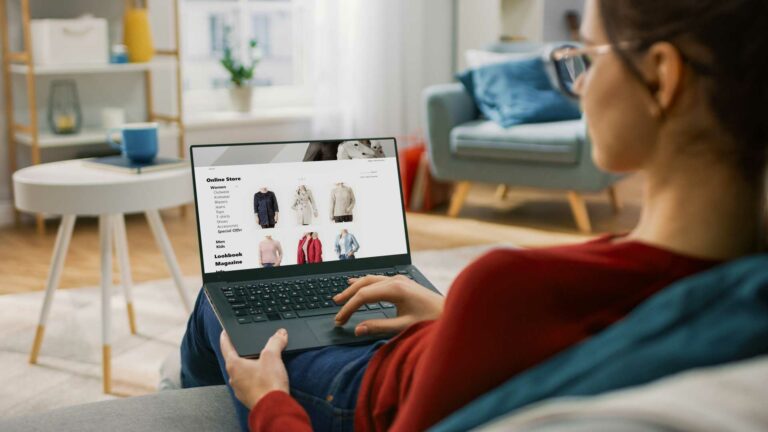People can add the luxury to your virtual retail experience
The shift to online retail is not a recent phenomenon, nor was it brought about by the advent of Covid-19. There are plenty of statistics that demonstrate the strength of growth seen over a number of years. Whilst global online sales sat at 6% in 2014, by 2019 that figure had already risen to 13%. The pandemic did not create the trend, it simply served to hasten its further development. Many different commentators have noted that online sales growth that would previously have taken up to three years took place in just a few months.
“COVID-19 is transforming consumer lives – we have covered a “decade in days” in adoption of digital.”
McKinsey, How COVID-19 is changing consumer behaviour –now and forever, June 2020
Many retailers and brands commenced their journeys of digital transformation several years ago, but even for those, the pandemic sounded a shrill note of alarm. Suddenly such transformation and development acquired an urgency not seen previously. In some cases, innovation seemed to equate to the removal of people from the shopping experience, in the name of efficiency and convenience. In physical retail we saw the emergence of stores where consumers could make their purchases with little to no human interaction. Suddenly the integration of digital thinking became a way of de-humanising the purchase journey, rather than making it a more enjoyable and rewarding experience. Whilst this might be seen as an example of the merging of physical and digital thinking resulting in an innovative end product for the consumer, the removal of human contact doesn’t have to become a common theme when the two worlds collide.
What does it mean for the future of retail, both physical and digital? Well, to begin with, we should dispel the notion that consumers think about physical and online shopping as two disconnected experiences that never meet. The purchase journey has never been less linear. Those long-trotted-out lines of touchpoints that suggest consumers move along a well-trodden path in a predictable way no longer have credence and for a brand or a retailer that brings both challenge and opportunity. Clearly, there is a need to find ways of covering off as many of those touchpoints as possible for the aspiring purchaser, but how to make that journey engaging and fruitful, that is the challenge.
As D2C websites have become increasingly important revenue generators so brands and retailers have sought the best ways to serve up the content they hope and believe will convert interest into sales. Certainly, we know that video is important, trumping static imagery, and attracting the highest levels of engagement. At the same time there is a need to cover all the details a consumer might want to see. The temptation to fill the page with numerous specs and technical points can become overwhelming, resulting in something that has little appeal and does nothing to enhance the online shopping experience itself.
Presented with the choice now of heading in-store or surfing the web for their latest product of need or desire, consumers often face a similar choice as to whether they can get personalised, relevant advice. Go to your local store and hopefully find an informed and helpful sales associate prepared and able to answer those critical questions or click on a product detail page that says much without often saying anything at all. There are, of course, online marketplaces that do an amazing job of listing products and meeting the customer’s convenience objective. What they cannot offer though is a true human connection. It might seem strange, but it could be argued that this human connection has become a luxury, and like most of life’s luxuries that means it isn’t widely available. We all live our lives surrounded by technology, much of it helpful and beneficial, stretching across how we travel, how we find entertainment, how we consume content and how we work. From time to time this all-pervasive tech means we crave some old-fashioned human interaction.
As we see consumers vote with their wallets and shift their spending towards those brands and retailers that can offer them personalised, humanised interactions, so we see the growth of live video chat services as one way of satisfying that craving.
“Human connection is the new luxury….What’s clear is that consumers are increasingly rewarding organisations that humanise the buying journey.”
Shopify’s Future of Commerce report
So, what does all this mean for brands that see a continued need to strengthen their D2C performance? Leaping headlong into a battle with marketplaces that will likely always win on convenience, and potentially on cost too, doesn’t feel like a great direction to take. Perhaps it all comes back to people. Give customers the opportunity to engage how and when they want to, yet retain the convenience of the digital platform, from a mobile or a desktop, from home or work. A virtual shopping experience doesn’t have to feel soulless and devoid of personality. Online sales assistants can be trained to understand the different cues they spot when interacting live with customers. They can initiate a conversation at a time and in a way that works for the customer. Want instant advice? No problem, text or video? Your choice. Not convenient right now? No problem, have a look at the available slots and we’ll be right here for the one that fits with your busy schedule.
The immediacy and relevancy video live chat can provide are huge wins for customers and brands alike. No more scrolling through pages of FAQs or painful searching just to find a way to ask a question that might illicit a timely response. Queries are addressed in the moment leading to increased levels of conversion and of equal importance, lower levels of costly returns as consumers are guided towards the product that meets their needs and does just what they want it to. No more erroneous purchases that lead to frustration post unboxing and end up back in the logistics system, either heading back into stock or written off as unsaleable.
At Storey we can add that unique element to your virtual retail offering with our online sales staffing service, ensuring the right people are on hand to host engaging and informative conversations with your customers. We can utilise existing resource, providing in-depth training and all the right equipment or we can even recruit, train and manage those that become the human face of your brand’s digital presence. Customers become fans as they enjoy live interactions that address their specific needs and leave them confident and satisfied, ready to be advocates for your brand, your products, and the experience you provide.
monica




